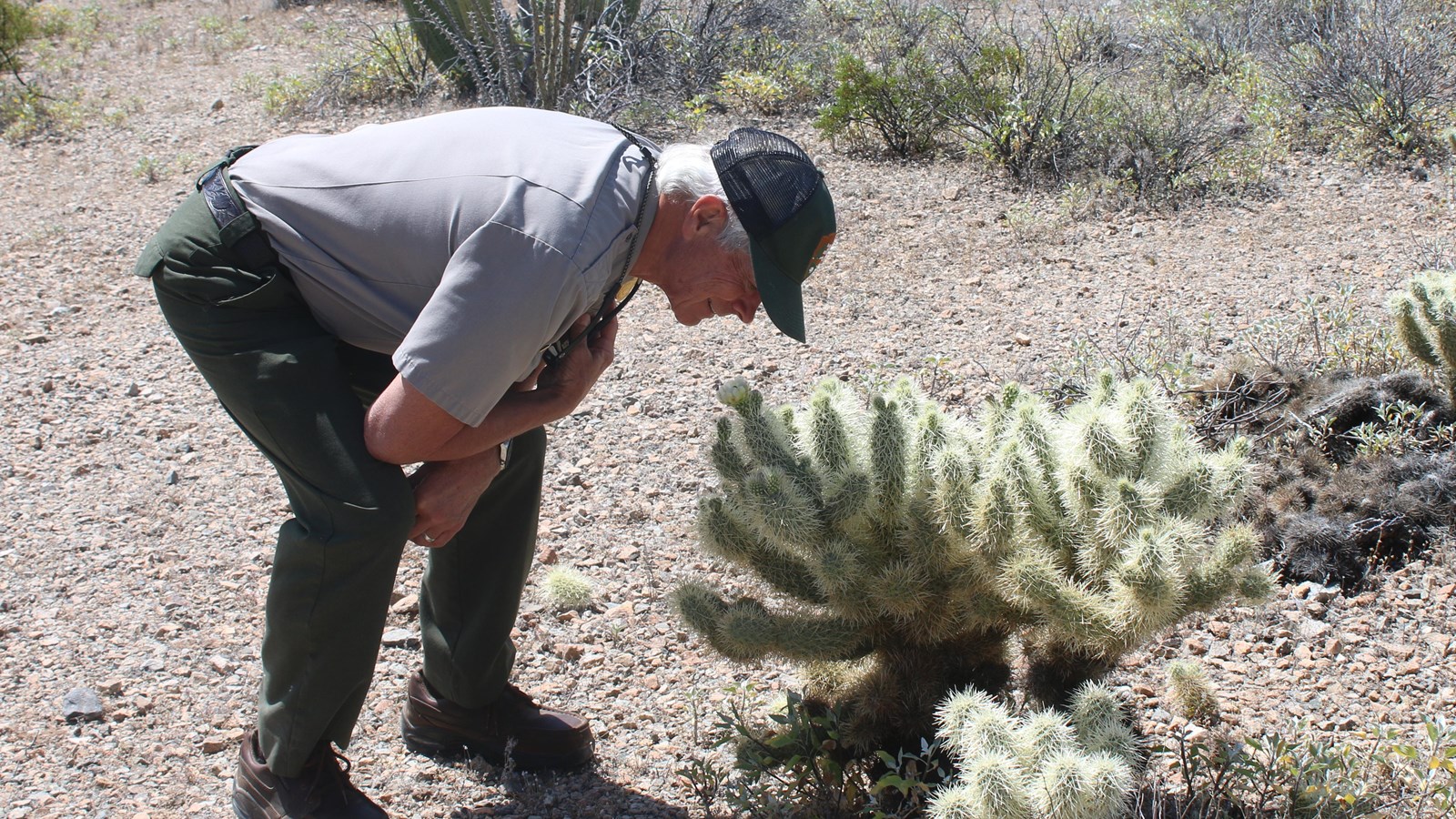Last updated: June 18, 2021
Place
Ajo Mountain Drive Stop 17

NPS Photo/K Ceballos
Stop 17
Teddy Bear Pass
Do not be deceived by the cuddly name. These teddy bear cholla will bite rather than cuddle you to sleep. They get their name because they look fuzzy and cute, but look carefully and you’ll see millions of tiny hooked spines genetically designed to attach to anything that gets too close. These spines are an adaptation to the desert sun; they create shade for the cholla itself, reducing its exposure to the sun. Teddy bear cholla reproduce in the same manner as many chain-fruit cholla; by breaking off joints and rooting them into the ground. This means that all the cacti you see before you may have come from one plant that was dropped off in this area by an animal that brushed by another teddy bear cholla along his path. According to botanists, it is very possible that all the teddy bear cholla in the United States come from a single strain.
Packrats will take the cholla joints to make a very protective nest called a midden. See if you can find one of these middens. Packrats have been known to make multi-story middens in wood piles or dead cacti. Some very surprising information has been uncovered from these cholla-covered homes. A midden in the Puerto Blanco Mountains records the teddy bear chollas’ arrival here 10,000 years ago! This cactus migrated here when the Sonoran Desert was in its infancy and from the abundance found here at Teddy Bear Pass, it has adapted quite well.
